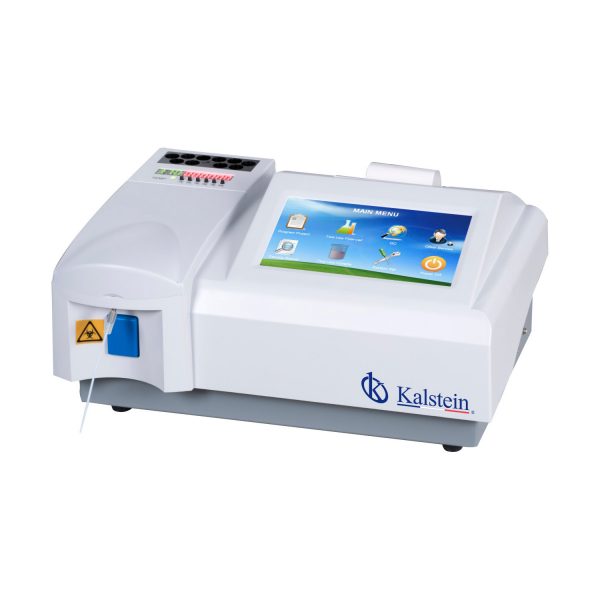Clinical chemistry analyzers are instruments that test clinical samples such as blood serum, plasma, urine, and cerebrospinal fluid to detect the presence of disease- or drug-related analytes. Clinical chemistry analyzers are used in a variety of settings, including small clinics, research labs, and high-throughput hospital labs.
Analytes commonly include enzymes, substrates, electrolytes, specific proteins, drugs of abuse, and therapeutic drugs. The results provide physicians with information on kidney, heart, and liver function and toxicology.
The analyzers are highly automated to maximize performance, improve user safety against biological hazards, and decrease the risk of cross contamination. The samples are loaded into the machine and the tests are scheduled by the user. A probe measures an aliquot of sample and places it in a reaction vessel. Reagents are added from a refrigerated supply on board. Incubation time is allowed, if necessary; then the photometric or ion selective electrode (ISE) test determines the analyte concentration. Results are displayed on the screen or sent to a printer or computer.
How to choose the chemical analyzer that suits my need?
Your choice of chemistry analyzer will depend on the types of tests you want to run and the performance you require. Other factors include sample handling, degree of automation, data management, operating costs, footprint, and whether the machine can handle micro-volume samples.
Assays and analytical methods
The most common test method is photometry. The sample is mixed with the appropriate reagent to produce a reaction that results in a color. The concentration of the analyte determines the strength of the color produced. The photometer illuminates the sample with light of the appropriate wavelength and measures the amount of light absorbed, which directly correlates to the concentration of the analyte in the sample.
The other important analytical method is the use of ion selective electrodes to measure ions such as Na +, K +, Cl–, and Li +. An ISE is a sensor that determines the concentration of ions in a solution by measuring current flow through an ion-selective membrane.
Automation
Clinical chemistry analyzers are highly automated to provide speed, consistency of results, avoid contamination, protect operators from biohazard materials, and the ability to walk. Onboard refrigerated reagent storage, connection to a water supply and automated recalibration allow long periods of operation without intervention.
Basic care of chemical analyzers
Although most of the processes are automatic, it should be taken into account that proper hygiene and handling of these devices can significantly extend their useful life. In the same way, it is important to carry out the maintenance of the equipment in the hands of a professional from time to time; depending on use and model.
At Kalstein we have an excellent range of clinical chemistry analyzers from simple options to fully automated equipment, adapted to your reality. That is why we invite you to take a look at HERE

